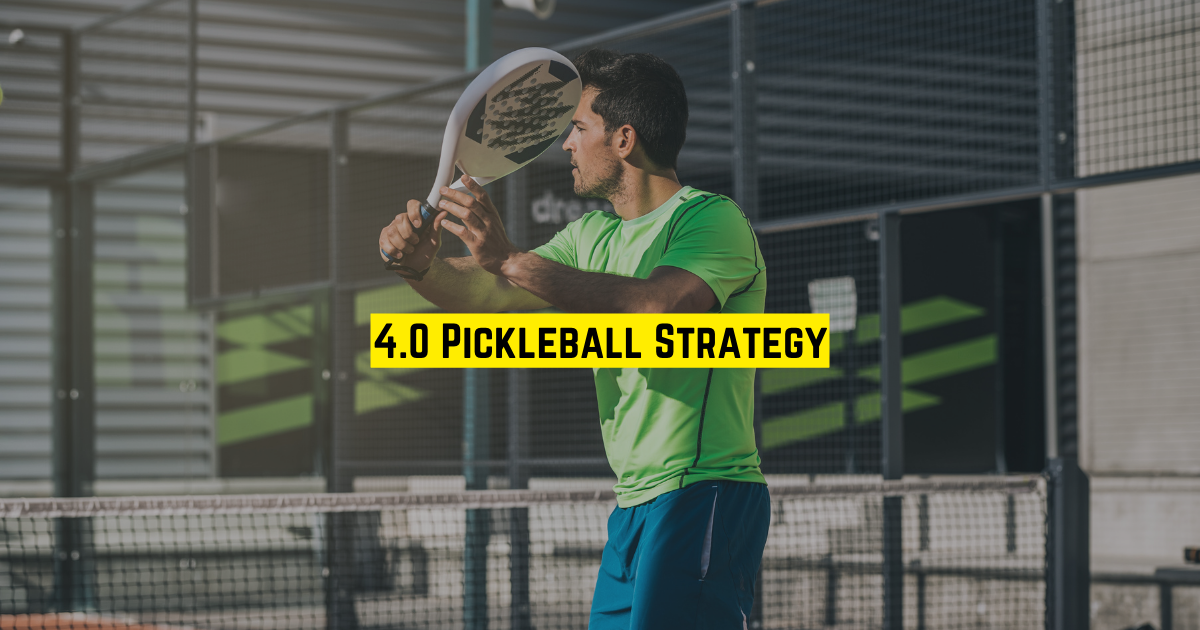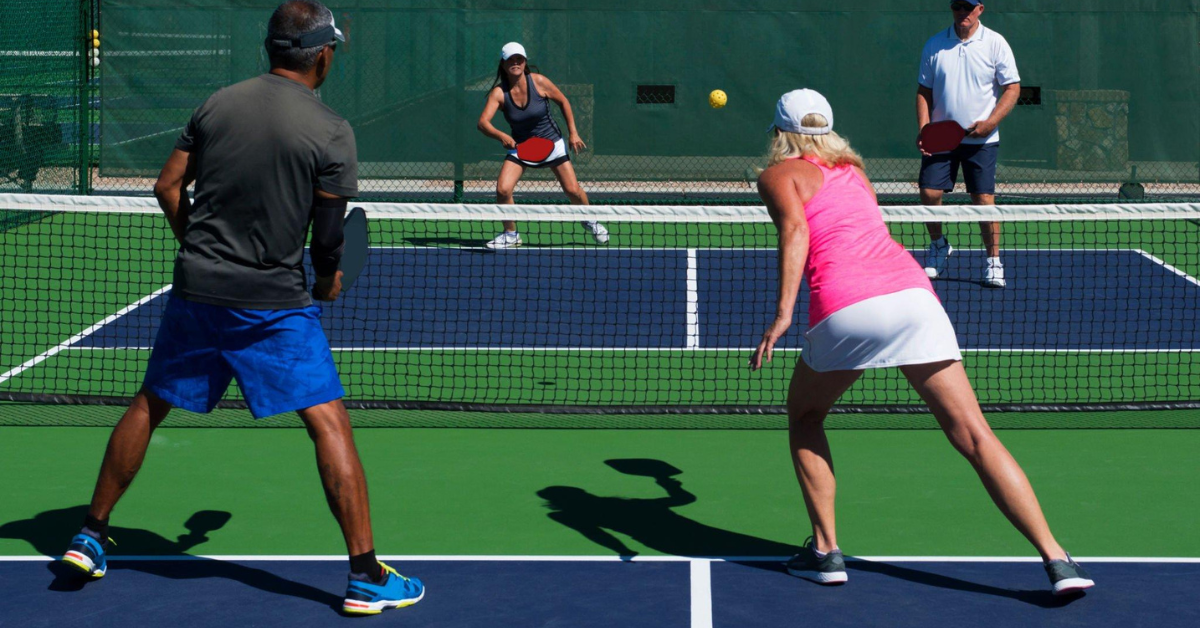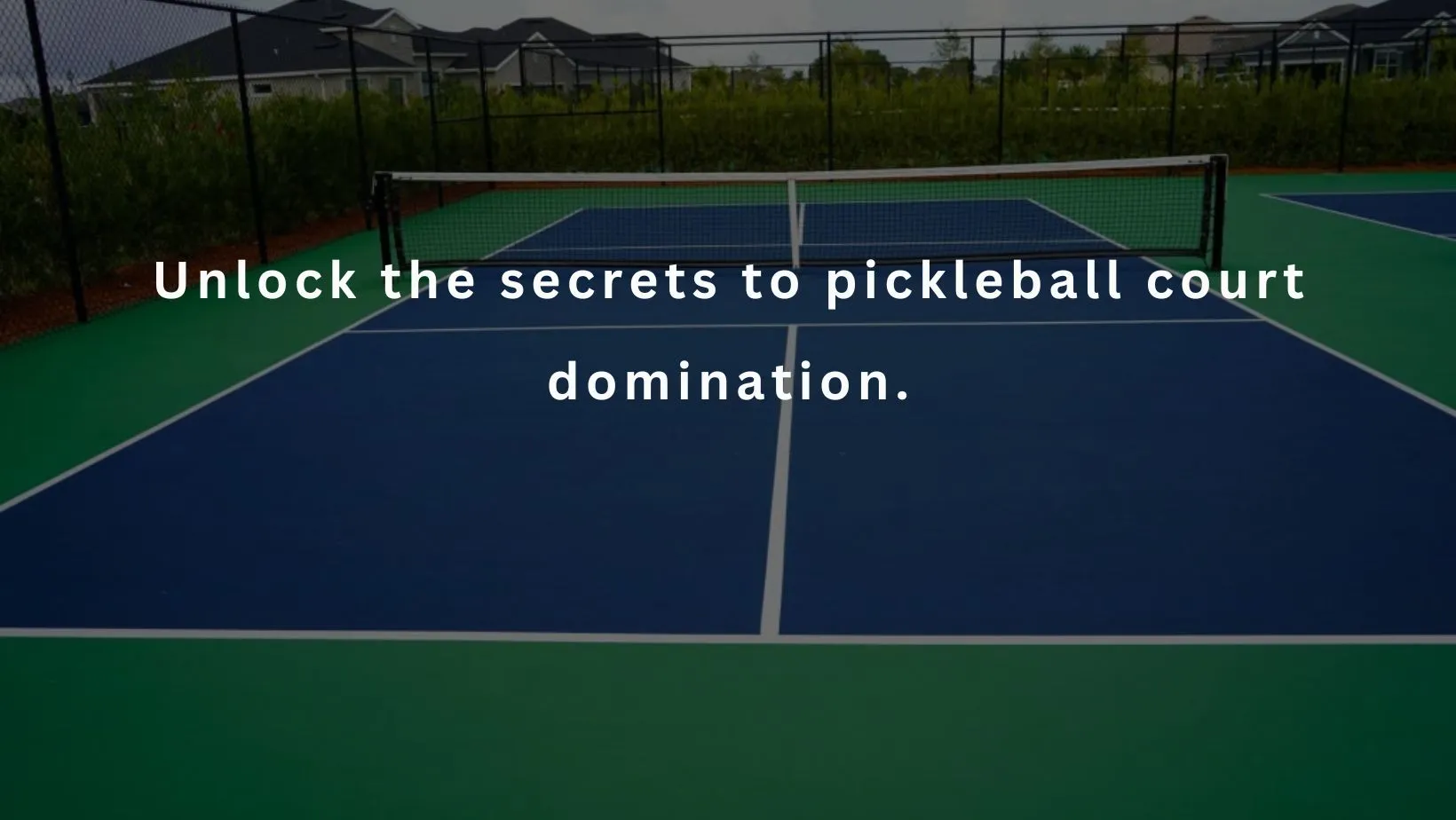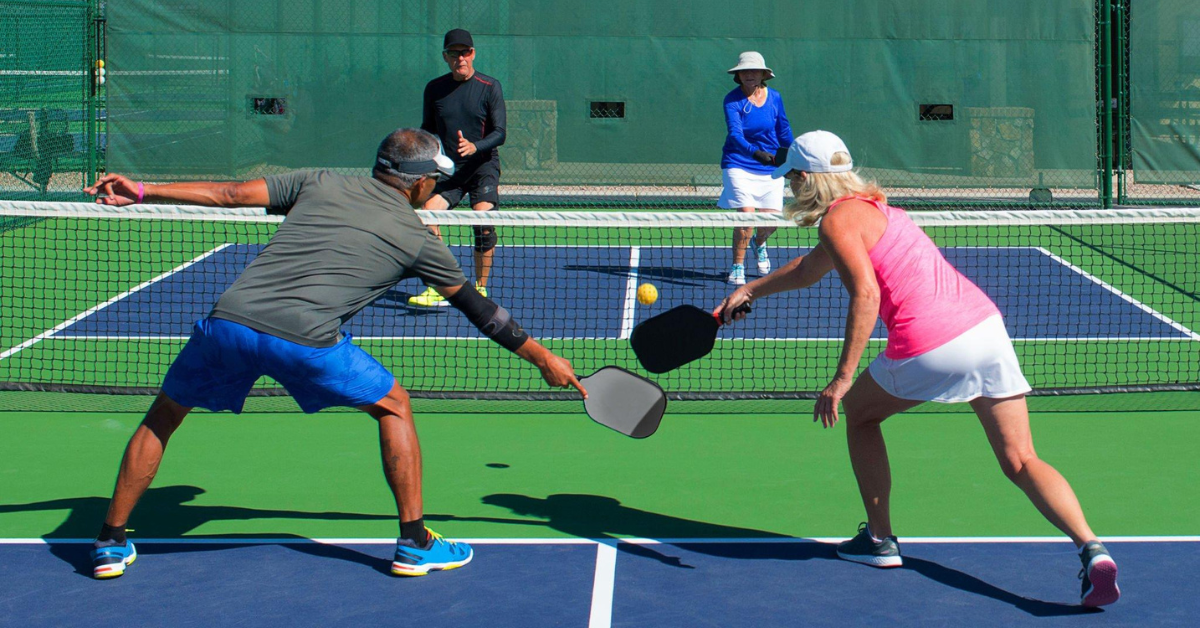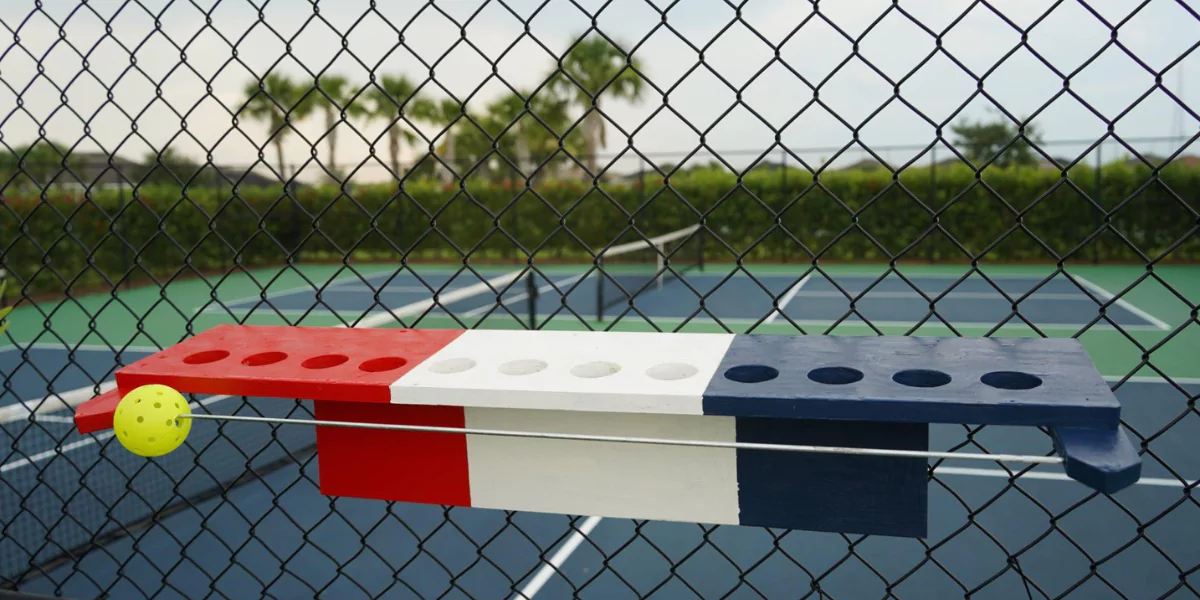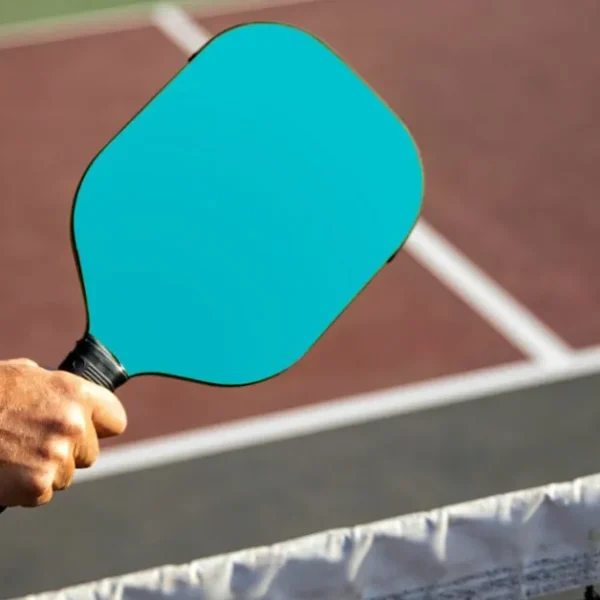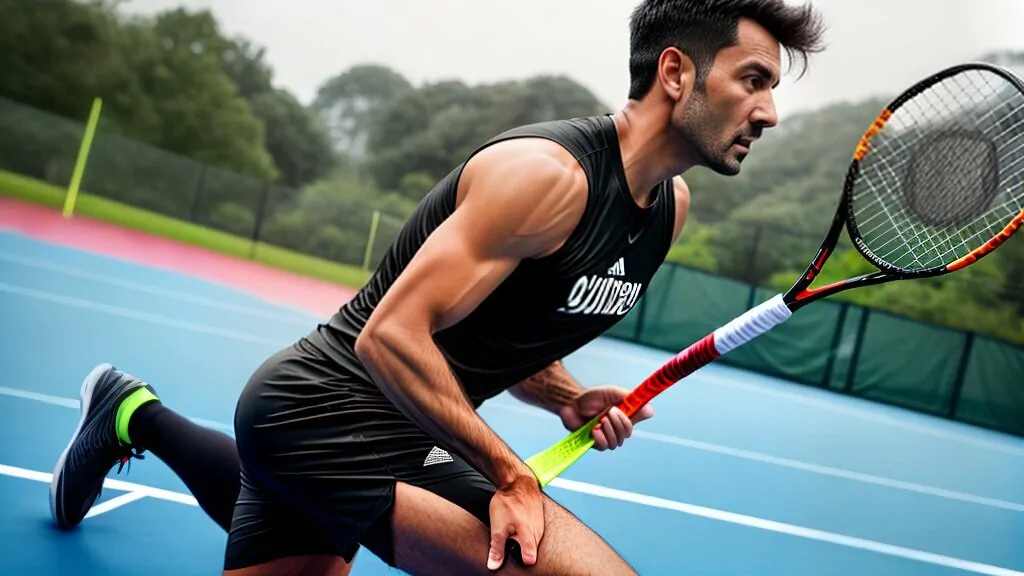One of the most common goals for pickleball players is to achieve a 4.0 rating, which means you are an advanced player who can compete with other skilled players. A 4.0 player has consistent and accurate shots, can control the pace and direction of the ball, can handle a variety of situations and opponents, and can execute effective strategies and tactics.
But how do you go from a 3.5 player to a 4.0 player? What are the skills and techniques that you need to master to make the jump? In this article, we will share with you six pro tips that will help you improve your pickleball game and reach the 4.0 level.
Pro Tips To Go From 3.5 to 4.0 in Pickleball
Before we dive into the specific tips, let’s talk about what is a 4.0 pickleball strategy and why it is important. A 4.0 pickleball strategy is a plan or approach that you use to win points and games against your opponents. It involves knowing your strengths and weaknesses, your opponent’s tendencies and habits, the court conditions and rules, and the best way to use your shots and positioning to gain an advantage.
A 4.0 pickleball strategy is important because it helps you play smarter, not harder. It helps you avoid making mistakes, exploit your opponent’s weaknesses, create opportunities for yourself, and finish points effectively. A 4.0 pickleball strategy also helps you adapt to different situations and opponents, as well as cope with pressure and challenges.
A 4.0 pickleball strategy is not something that you can learn overnight or copy from someone else. It is something that you have to develop through practice, experience, and feedback. It also depends on your personal style, preferences, and goals. However, there are some general principles and guidelines that you can follow to create your own 4.0 pickleball strategy.
Here are six pro tips that will help you do that:
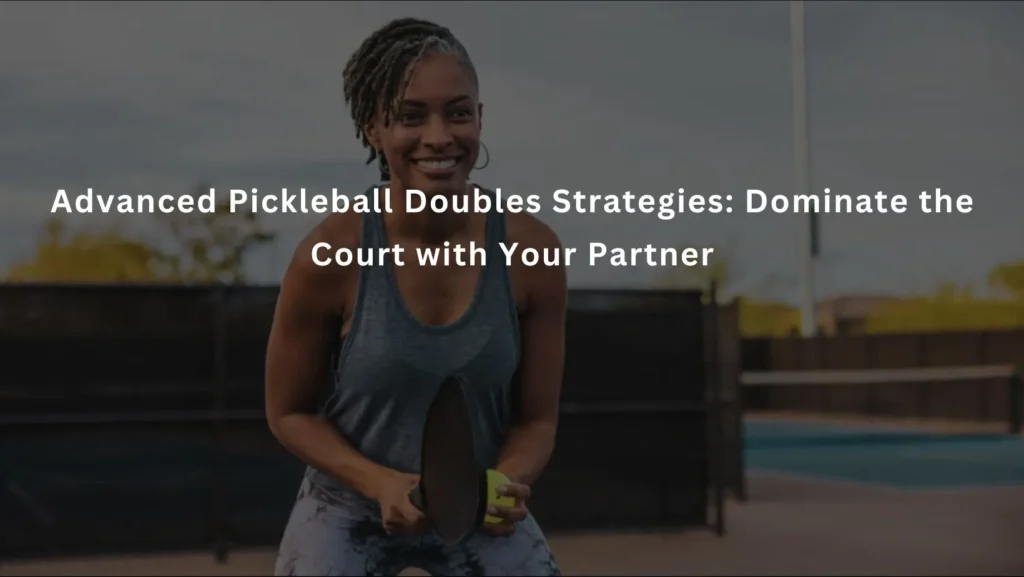
Tip #1: Stop Trying to Hit Perfect 3rd Shot Drops
One of the most common mistakes that 3.5 players make is trying to hit perfect 3rd shot drops every time they serve or return serve. A 3rd shot drop is a soft shot that lands in the non-volley zone (also known as the kitchen), forcing your opponent to hit up on the ball and allowing you to move forward to the net.
A 3rd shot drop is a great shot to use when you have an opportunity to hit it low and deep, making it difficult for your opponent to attack or return it. However, it is not always the best option, especially when you are under pressure or out of position.
Trying to hit perfect 3rd shot drops every time can lead to several problems:
- You may hit the ball too high or too short, giving your opponent an easy put-away shot.
- You may hit the ball into the net or out of bounds, giving away free points.
- You may lose confidence and rhythm in your stroke, affecting your other shots.
- You may become predictable and easy to read by your opponent.
Instead of trying to hit perfect 3rd shot drops every time, you should mix up your shots and use other options such as:
- A 3rd shot drive: A hard shot that goes over the net at a low angle, forcing your opponent to hit back quickly or defensively.
- A 3rd shot lob: A high shot that goes over your opponent’s head, making them retreat or hit an overhead smash.
- A 3rd shot angle: A diagonal shot that goes wide or cross-court, creating space and angles for yourself.
The key is to choose the best shot for each situation based on:
- The height of the ball: If the ball is low, you should hit a drop or a drive; if the ball is high, you should hit a lob or an angle.
- The position of your opponent: If your opponent is close to the net, you should hit a lob or an angle; if your opponent is far from the net, you should hit a drop or a drive.
- The position of yourself: If you are close to the baseline, you should hit a drop or a lob; if you are close to the net, you should hit a drive or an angle.
By mixing up your shots and choosing the best option for each situation, you will make your 3rd shots more effective and unpredictable, and you will be able to move forward to the net more easily and confidently.
Tip #2: Get Aggressive With Your 4th Shots
Another common mistake that 3.5 players make is being too passive or defensive with their 4th shots. A 4th shot is the shot that you hit after your opponent hits a 3rd shot drop. Many 3.5 players tend to hit their 4th shots back softly or high, hoping to extend the rally or avoid making errors.
However, this can be a big mistake, especially against 4.0 players who are more aggressive and skilled. Hitting passive or defensive 4th shots can lead to several problems:
- You may give your opponent an easy volley or smash, allowing them to take control of the point.
- You may lose the opportunity to attack or put pressure on your opponent, giving them time to recover or reposition.
- You may lose momentum and confidence in your game, affecting your other shots.
Instead of hitting passive or defensive 4th shots, you should get aggressive and offensive with your 4th shots and use them as a weapon to win points and games. Here are some ways to do that:
- Hit the ball hard and low, aiming for your opponent’s feet or body, making them hit a weak or awkward shot.
- Hit the ball with topspin or slice, adding spin and curve to the ball, making it harder for your opponent to handle or return it.
- Hit the ball with angle or placement, hitting the ball wide or deep, creating space and angles for yourself.
The key is to hit your 4th shots with purpose and intention, based on:
- The height of the ball: If the ball is low, you should hit it hard and low; if the ball is high, you should hit it with spin or angle.
- The position of your opponent: If your opponent is close to the net, you should hit it with angle or placement; if your opponent is far from the net, you should hit it hard and low.
- The position of yourself: If you are close to the net, you should hit it with placement or angle; if you are far from the net, you should hit it hard and low.
By getting aggressive and offensive with your 4th shots, you will make your 4th shots more powerful and unpredictable, and you will be able to take control of the point and put pressure on your opponent.
Tip #3: You’re Moving Too Much Because You’re Out of Position
One of the most important skills in pickleball is footwork. Footwork is how you move around the court to get in position to hit the ball. Good footwork can help you improve your balance, speed, agility, and coordination, as well as reduce your risk of injury.
However, many 3.5 players have poor footwork or move too much on the court. They may run around too much, chase every ball, or move out of sync with their partner. This can lead to several problems:
- You may waste energy and get tired faster, affecting your stamina and performance.
- You may lose balance and stability, affecting your accuracy and consistency.
- You may expose gaps or weaknesses in your court coverage, allowing your opponent to exploit them.
Instead of moving too much on the court, you should move efficiently and effectively on the court. Here are some tips to do that:
- Move with small steps: Use small steps instead of big leaps or jumps to move around the court. This will help you maintain balance and control, as well as adjust quickly and easily to different situations.
- Move with anticipation: Anticipate where the ball is going based on your opponent’s body language, paddle position, and shot selection. This will help you get in position faster and earlier, as well as react better and smarter to different shots.
- Move with communication: Communicate with your partner verbally or non-verbally about who is covering what area of the court. This will help you avoid confusion and collisions, as well as coordinate better and smoother with your partner.
The key is to move with purpose and intention on the court based on:
- The direction of the ball: Move in the same direction as the ball when you are hitting it or moving forward; move in the opposite direction as the ball when you are defending it or moving backward.
- The position of your opponent: Move closer to your opponent when they are hitting a soft shot; move away from your opponent when they are hitting a hard shot.
- The position of yourself: Move closer to the net when you are attacking or finishing a point; move away from the net when you are defending or resetting a point.
By moving efficiently and effectively on the court, you will make your footwork more optimal and optimal, and you will be able to improve your shot quality and court coverage.
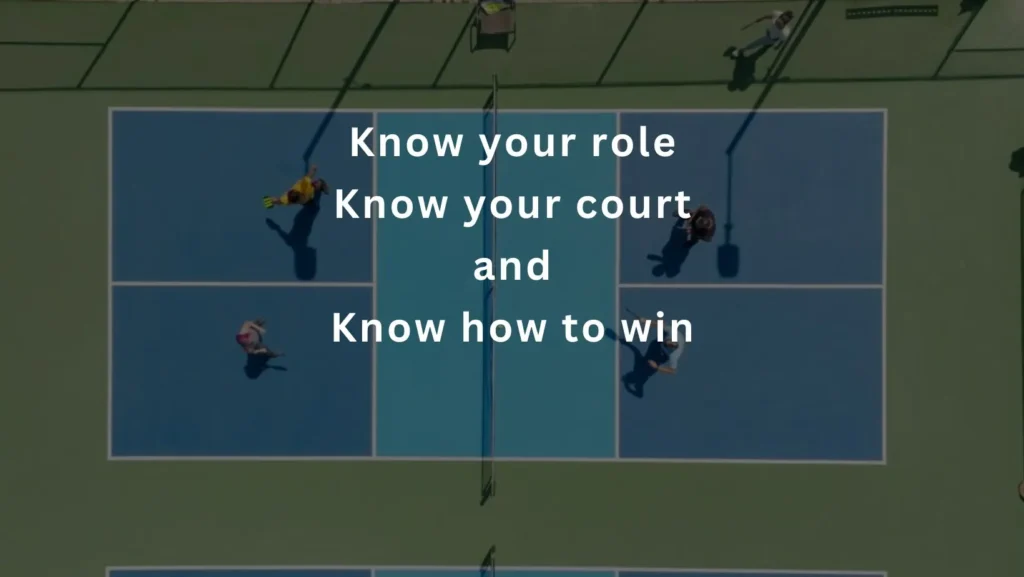
Tip #4: Reset the Ball
One of the most challenging situations in pickleball is when you are under pressure or in trouble. This can happen when your opponent hits a hard or fast shot, when you are out of position or off balance, or when you are facing a high-risk or low-reward shot. In these situations, many 3.5 players tend to panic or rush, and try to hit a risky or desperate shot. This can lead to several problems:
- You may hit the ball into the net or out of bounds, giving away free points.
- You may hit the ball too high or too weak, giving your opponent an easy put-away shot.
- You may lose control and confidence in your game, affecting your other shots.
Instead of hitting a risky or desperate shot, you should reset the ball. Resetting the ball means hitting a soft or neutral shot that lands in the non-volley zone, forcing your opponent to hit up on the ball and allowing you to regain your position and composure.
Resetting the ball is one of the most important skills in pickleball, especially at the 4.0 level and above. It can help you:
- Avoid making errors or giving away easy points.
- Extend the rally or create a new opportunity for yourself.
- Change the pace or direction of the game.
- Frustrate or tire out your opponent.
Here are some tips to reset the ball effectively:
- Use a continental grip: A continental grip is a grip that is halfway between a forehand and a backhand grip. It allows you to hit both forehand and backhand shots with ease and consistency, as well as add spin and control to the ball.
- Use a punch or block shot: A punch or block shot is a shot that uses minimal backswing and follow-through, and relies on the pace and angle of your opponent’s shot. It allows you to hit the ball quickly and accurately, as well as absorb or redirect the power of your opponent’s shot.
- Aim for the middle: The middle of the court is the safest and most effective place to reset the ball. It reduces the risk of hitting the ball out of bounds, as well as creates confusion and hesitation between your opponents.
The key is to reset the ball with purpose and intention based on:
- The height of the ball: If the ball is low, you should hit it with a punch shot; if the ball is high, you should hit it with a block shot.
- The position of your opponent: If your opponent is close to the net, you should hit it with a block shot; if your opponent is far from the net, you should hit it with a punch shot.
- The position of yourself: If you are close to the net, you should hit it with a block shot; if you are far from the net, you should hit it with a punch shot.
By resetting the ball effectively, you will make your game more resilient and adaptable, and you will be able to handle any situation or opponent.
Tip #5: Be Intentional with Your Dinks
One of the most common shots in pickleball is the dink. A dink is a soft shot that goes over the net and lands in the non-volley zone, creating a slow and low rally between you and your opponent. Dinking is an essential skill in pickleball, as it helps you control the tempo and direction of the game, as well as set up for an attack or defense.
However, many 3.5 players tend to dink without a clear purpose or plan. They may dink randomly or aimlessly, hoping to win by attrition or luck. This can lead to several problems:
- You may lose focus and concentration, affecting your accuracy and consistency.
- You may lose patience and discipline, affecting your strategy and tactics.
- You may lose initiative and advantage, allowing your opponent to dictate or dominate the game.
Instead of dinking without a clear purpose or plan, you should be intentional with your dinks. Being intentional with your dinks means hitting each dink with a specific goal or objective in mind. It involves knowing what you want to achieve with each dink, how you want to achieve it, and why you want to achieve it.
Being intentional with your dinks can help you:
- Improve your focus and concentration, enhancing your accuracy and consistency.
- Improve your patience and discipline, enhancing your strategy and tactics.
- Improve your initiative and advantage, enhancing your control and domination of the game.
Here are some tips to be intentional with your dinks:
- Use different types of dinks: There are different types of dinks that you can use in pickleball, such as straight dinks, cross-court dinks, inside-out dinks, outside-in dinks, spin dinks, etc. Each type of dink has its own advantages and disadvantages, as well as different effects on your opponent. You should use different types of dinks to vary your shots and keep your opponent guessing.
- Use different targets for your dinks: There are different targets that you can aim for with your dinks, such as the corners, the sidelines, the centerline, the feet, the body, etc. Each target has its own benefits and risks, as well as different impacts on your opponent. You should use different targets for your dinks to exploit your opponent’s weaknesses and create opportunities for yourself.
- Use different patterns for your dinks: There are different patterns that you can follow with your dinks, such as one-two-three, one-two-one, one-one-one, etc. Each pattern has its own rhythm and logic, as well as different outcomes and consequences. You should use different patterns for your dinks to test your opponent’s skills and reactions, as well as set up for a winning shot.
The key is to be intentional with your dinks based on:
- The height of the ball: If the ball is low, you should hit a straight or cross-court dink; if the ball is high, you should hit an inside-out or outside-in dink.
- The position of your opponent: If your opponent is close to the net, you should hit a spin or angle dink; if your opponent is far from the net, you should hit a deep or low dink.
- The position of yourself: If you are close to the net, you should hit a low or angle dink; if you are far from the net, you should hit a deep or spin dink.
By being intentional with your dinks, you will make your game more deliberate and effective, and you will be able to win more points and games.
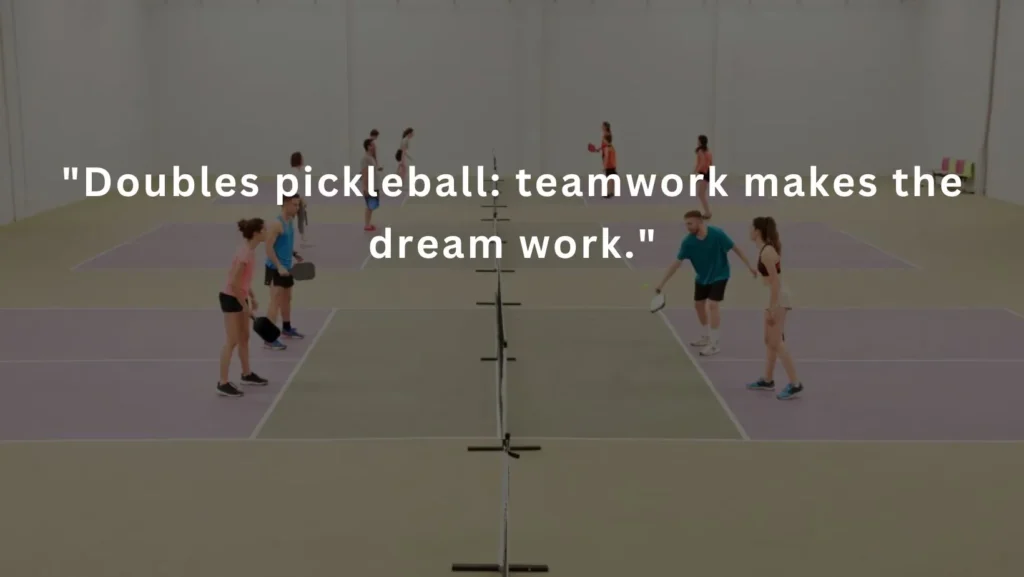
Tip #6: Use the Right Grip
One of the most fundamental skills in pickleball is the grip. The grip is how you hold the paddle in your hand. It affects how you swing the paddle, how you hit the ball, and how you play the game. A good grip can help you improve your power, accuracy, consistency, and versatility. A bad grip can hinder your performance and limit your potential.
However, many 3.5 players tend to use the wrong grip or change their grip too often. They may use a grip that is too tight or too loose, too high or too low, too forehand or too backhand. They may also switch their grip between shots or during rallies. This can lead to several problems:
- You may lose control and feel of the paddle and the ball, affecting your accuracy and consistency.
- You may lose speed and timing of the paddle and the ball, affecting your power and pace.
- You may lose flexibility and adaptability of the paddle and the ball, affecting your variety and creativity.
Instead of using the wrong grip or changing your grip too often, you should use the right grip and stick with it. The right grip is a grip that suits your style, preferences, and goals. It allows you to hit all kinds of shots with ease and confidence, as well as adjust quickly and easily to different situations.
The right grip is not something that you can find in a book or copy from someone else. It is something that you have to discover through trial and error, practice and feedback. However, there are some general principles and guidelines that you can follow to find your right grip.
Here are some tips to use the right grip:
- Use a neutral grip: A neutral grip is a grip that is halfway between a forehand and a backhand grip. It allows you to hit both forehand and backhand shots with ease and consistency, as well as add spin and control to the ball.
- Use a comfortable grip: A comfortable grip is a grip that feels natural and relaxed in your hand. It allows you to hold the paddle firmly but lightly, without causing any tension or strain in your wrist, arm, or shoulder.
- Use a consistent grip: A consistent grip is a grip that stays the same throughout the game. It allows you to maintain rhythm and flow in your strokes, without causing any confusion or hesitation in your mind.
The key is to use the right grip based on:
- The type of shot: If you are hitting a soft or neutral shot, such as a drop or a dink, you should use a neutral or continental grip; if you are hitting a hard or offensive shot, such as a drive or a smash, you should use a forehand or backhand grip.
- The position of the ball: If the ball is low or below the net level, you should use a low or continental grip; if the ball is high or above the net level, you should use a high or forehand or backhand grip.
- The position of yourself: If you are close to the net, you should use a low or continental grip; if you are far from the net, you should use a high or forehand or backhand grip.
By using the right grip, you will make your game more efficient and effective, and you will be able to hit all kinds of shots with ease and confidence.
Conclusion
If you want to improve your game and reach the next level, you need to learn some pickleball strategies and tactics. In this article, we have shared with you six pro tips that will help you go from a 3.5 player to a 4.0 player. These tips are:
- Stop trying to hit perfect 3rd shot drops every time.
- Get aggressive with your 4th shots.
- Move efficiently and effectively on the court.
- Reset the ball when you are under pressure or in trouble.
- Be intentional with your dinks.
- Use the right grip for each shot.
By following these tips, you will be able to improve your skills and techniques, as well as develop your own 4.0 pickleball strategy. You will also be able to compete with other skilled players, as well as have more fun and satisfaction in playing pickleball.
